Photographs: Reuters. Mihir S Sharma
Rewind to five years ago, when the Sensex hit its historic high. As the market booms again, what's been learnt? And what lies in store? Mihir S Sharma analyses...
It was a simpler, happier time five years ago. Five Januaries past, India's growth story was unimpaired. The United Progressive Alliance had a comfortable majority, with Left support, and Manmohan Singh looked firmly in charge.
Bear Stearns was still in business, and Dick Fuld was running the invincible Lehman Brothers like a gorilla, with an insatiable appetite for risk.
Coal was just lying around for the taking, you just had to ask the sarkar nicely. Vast reserves of gas were waiting to be tapped just off the eastern coast.
...
Sensex swings: What lies in store?
Photographs: Reuters.
High-end construction was happening at double-quick speed in India's metropolitan cities, with finance easy to come by - this week five years ago, Fuld's Lehman was closing a deal to securitise real-estate loans for the Israeli construction company BSR Engineering, which wanted to build homes for an expected flood of foreign workers.
Lalit Modi was about to announce to the great and the good of Indian industry, led by Vijay Mallya, who could do no wrong, which one of them would get which team in the Indian Premier League.
Oh, and the Sensex hit its all-time peak of 21,078 on January 8, 2008.
So much is different now that the contrast can hurt the eyes. UPA is weak and indecisive, and Singh is no longer trusted by his core middle-class constituency. The world has endured financial crises and recession; natural resources have become expensive and scarce.
...
Sensex swings: What lies in store?
Photographs: Reuters.
Inflation has run up to then-unimaginable heights, and refuses to come down. Half-built apartment blocks loom dead-eyed in India's suburbs. Sachin Tendulkar and Rahul Dravid have retired, and their IPL-drunk replacements are being made to look like fat, lazy losers.
But the Sensex is doing fine, thanks very much for asking. It's close to 20,000, just over 5 per cent shy of its record of five years ago.
Superficially, there's something wrong with that picture, isn't there? How is it that the stock market can possibly look the same as it did at the end of the extraordinary bull run of the late 2000s?
...
Sensex swings: What lies in store?
Photographs: Reuters.
The answer, of course, is that it doesn't. It doesn't look anything like the same. Not only has the Sensex swung wildly in the interim, staying below 10,000 for months in late 2008, but the market's winning stocks have changed in composition and character.
And in those changes lies the story of the past five years - of the errors, false hopes and dashed expectations, as well as the strengths in adversity and hidden gems that hint where the next phase of India's growth is going to come from.
The biggest losers since the market's peak in 2008 are worth looking at a little more closely. Of the top 50, DLF lost the most, crashing by nearly 80 per cent. Reliance Infra was close, and just behind both was Jaiprakash Associates - the Jaypee group's flagship. Tata Steel, Reliance Industries and Bharti Airtel are up there as well.
...
Sensex swings: What lies in store?
Photographs: Reuters.
Expand the catchment a bit to the top 500, and we see Deccan Chronicle, Kingfisher Airlines and GTL Infra which bought Reliance Communication's towers in 2010. Perhaps you begin to see a pattern?
A toxic mix of overweening ambition, of political connections and muddled balance sheets, of debt binges and careless acquisitions, of prestige projects and promoter egos.
Now look at the winners. Lupin, that makes TB drugs, produced a 400 per cent return for its investors, including Rakesh Jhunjhunwala. Asian Paints; Sun Pharma; Dr Reddy's; TCS; ITC.
...
Sensex swings: What lies in store?
Photographs: Reuters.
Companies known for being professionally run, steady companies known for sticking to what they do best, companies with easy-to-read balance sheets.
In there are careful innovators, too, like Mahindra & Mahindra. HDFC Bank, which expanded its balance sheet conservatively, is in the list of top 10 gainers; ICICI Bank, which didn't, is down about 20 per cent since then.
The poster child, surely, of the changes since that long-ago January of 2008 has to be Mallya. Remember where he was that month; about to win an IPL franchise; making Captain Gopinath look like a cautious fool who didn't understand that India wanted to live well, not frugally.
...
Sensex swings: What lies in store?
Photographs: Reuters.
Kingfisher Airlines had just bought Air Deccan - cynics say because Mallya didn't want to wait the additional two years it would take him to get the Good Times flying internationally.
With Air Deccan's licence, Kingfisher could start international flights in January 2008. Recession wrecks ambitions like Mallya's; IndiGo has taken Captain Gopinath's model, added professional management, and prospered in the interim.
Indeed, that January was replete with instances of hubris. In the week the market hit its peak, Reliance Power produced its initial public offering, which was oversubscribed 70 times, and sold out in less than a minute.
...
Sensex swings: What lies in store?
Image: Finance Minister P Chidambaram.Photographs: Reuters.
Once and again Finance Minister P Chidambaram sagely told breathless reporters that its success was a reflection of the strength of the Indian economy. Within a day of its listing a few weeks later, it tanked 17 per cent. It has lost three-fourths of its value since.
Reading that IPO's draft prospectus today is a darkly amusing exercise. It isn't just that all the promised plants, which existed mainly on paper in 2008, were subsequently delayed for years. It's the breezy manner in which, for example, fuel supply is taken for granted.
The hero of January 2008 should really be whichever sad-eyed Gloomy Gus wrote the statutorily required section on risks at the beginning of the prospectus. Maybe his name was Murphy, because with the precision of a natural law, everything went as wrong as he warned it could.
Sensex swings: What lies in store?
Photographs: Reuters.
A good number of those who invested in the Reliance Power IPO and then saw their money vanish — a pattern that has turned retail investors off the stock market and towards, say, gold — will have believed that the Good Times were there to stay.
Not just Mallya was telling them that, after all, many others were. Consider CNBC-TV18's Udayan Mukherjee, who leaned forward in his chair to tell his viewers that IPO morning of January 15, 2008, that "2008 would be the year of mega-IPOs.
It will be the biggest primary market run in the past five-year bull run." Ignore the mangled tense, and pause to note that, over the next six months, the amount raised in IPOs was about half what had been raised in the equivalent months of the previous year, 2007.
...
Sensex swings: What lies in store?
Photographs: Uttam Ghosh/Rediff.com
Mukherjee went on to assure us there were "no signs of any massive directional moves" in the market. Less than a week later, the Sensex saw the two biggest falls in its history, on successive days.
(The day after those falls, Mukherjee wrote a column that bravely began "the thing about life is that one makes mistakes," and then went on to explain how everyone else had made easily-foreseeable mistakes.) FYI: Network18's down 91 per cent since then.
That's not to say those optimistic in that January were necessarily stupid. Jhunjhunwala made money off Lupin, the top 50's best performer; he's kept on making money off Titan, too. But it's odd, sometimes, to see how the best stock-pickers sound so off-key when it comes to larger predictions.
Jhunjhunwala, for example, thought five years ago that, by 2012, $57 billion of household savings would be in the equity markets. Instead, it's barely a few billion more than the $12 billion it was then. Buy his stocks, by all means, but take his statement that the Sensex at 40,000 five years from now is a "bearish prediction" with about as much salt as his portfolio will buy.
...
Sensex swings: What lies in store?
Photographs: Reuters.
That optimism depends on his belief that the price/earnings ratio for the Indian market will have to go up to 25, with earnings increasing steadily as well. Overall, the P/E has hovered around 17 of late; it was up at the 25 mark in January five years ago.
Disaggregating the P/E makes you wonder, though. Does the lower P/E mean the market's better placed now - or that people think there's something very odd about high corporate earnings in this environment? Does it, perhaps, reflect high inflation expectations?
Look at small-cap P/E - up over 40 from 21 five years ago, even though their market capitalisation has been crushed by over 45 per cent in those five years. Is it that smaller firms lack the pricing power that would enable them to earn through cost-cutting and raising prices? What does that mean for the sustainability of other corporate earnings?
And look at P/Es for various sectors, while you're at it. Consumer durables? At 95. Realty? Still at 25 - down, though, from 77 back at the peak. FMCG? 40, up from 30.
...
Sensex swings: What lies in store?
Photographs: Reuters.
It's difficult to see where the gains will come from. The market, and the economy, may have rushed to stability and clarity, but that can't last forever. Since 2008, you would have gained big by betting on virtue — but is that a sign of Indian maturity, or just a defensive market?
Can defensive stocks be overplayed? Remember Hindustan Unilever lost value at the beginning of the 2004 boom. Remember these sectors are more open to competition, and profit squeezes, than others. And there's an overall lesson from 2008 that people haven't grasped: depend on cheap foreign inputs, of coal or debt capital, say, and you're asking for trouble.
Pity nobody's woken up to the fact that foreign equity is also a cheap foreign input at the moment.
Yet, to the extent that this altered market reflects the changes to the economy, it would be hard to argue against the proposition that India, 5.5 per cent growth vs 8 per cent or not, is a better economy in many senses than it was then. That doesn't mean that it will get any better going forward.
...
Sensex swings: What lies in store?
Photographs: Dominic Xavier/Rediff.com.
Indeed, corporates can't rack up decent earnings on the back of cost-cutting forever. They've got to produce, and they've got to sell. How can they produce if nobody's investing in infrastructure?
How do we expect things to be produced without core industries? Why throw money at the auto sector, expecting it to grow, but not steel? How do we expect cement to boom, but not realty?
You have to ask yourself: would you invest in these companies that have lost so much since 2008? That, in a microcosm is India's problem — nobody trusts those who delivered high growth earlier, and so high growth is out of the question now. The limits of defensive stock-picking might well have been reached.
...
Sensex swings: What lies in store?
Photographs: Reuters.
Now, whole sectors have to turn around, or nobody will. Perhaps within those sectors that must turn around lie stocks of companies with balance sheets only slightly grubby, companies that you feel you can trust, although they've been battered by the storms that have hit their sectors.
India needs those companies if it is to grow; and so, if you believe that India will ever grow at a respectable pace again, those are the stocks to find.
You can't run to known virtue forever, and expect to make your fortune. That's true for the markets today. Perhaps it's true for India as well.
Sameer Mulgaonkar of the Business Standard Research Bureau helped crunch the numbers.

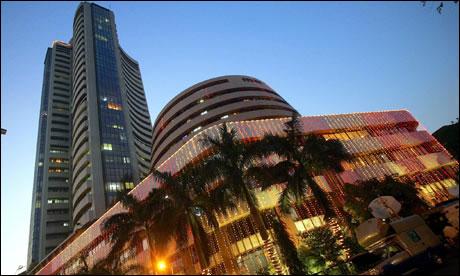



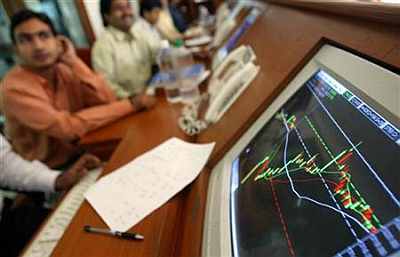
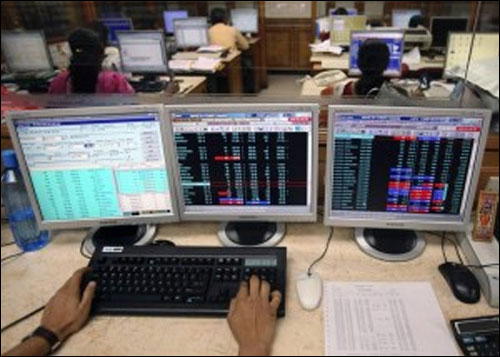
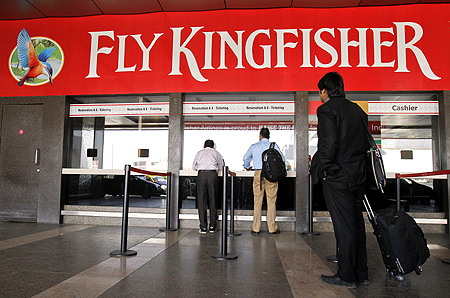
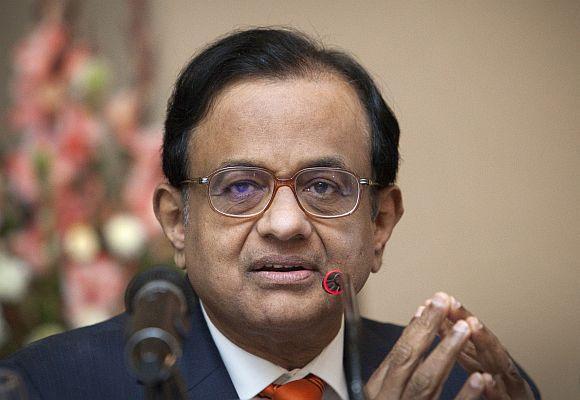
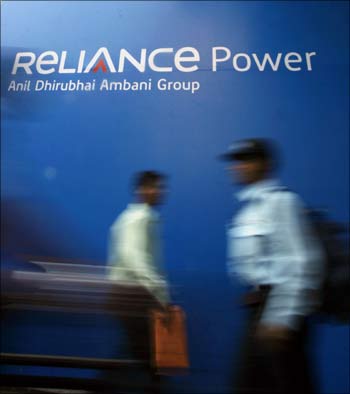
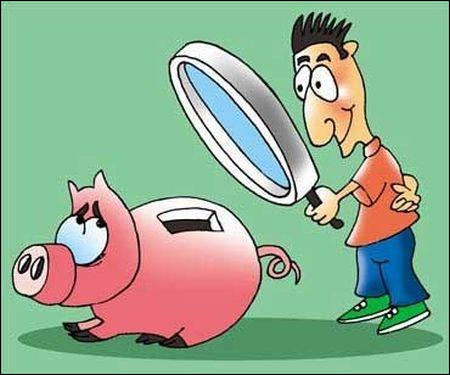
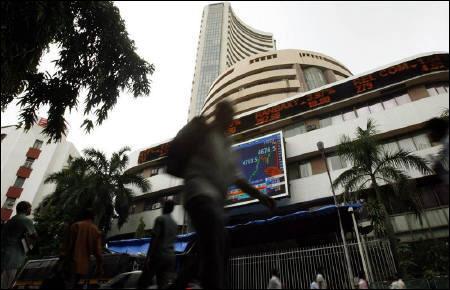


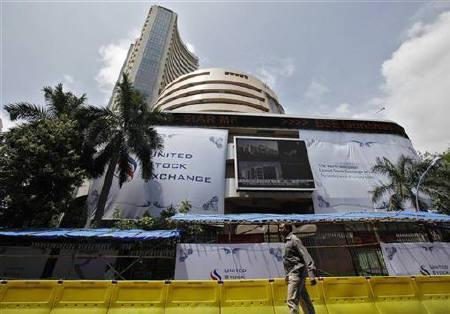

article